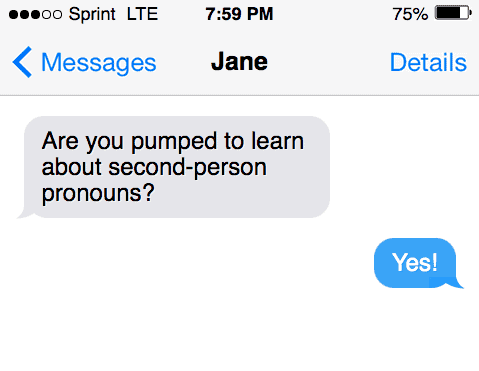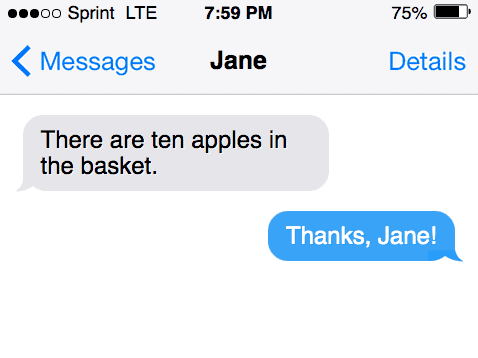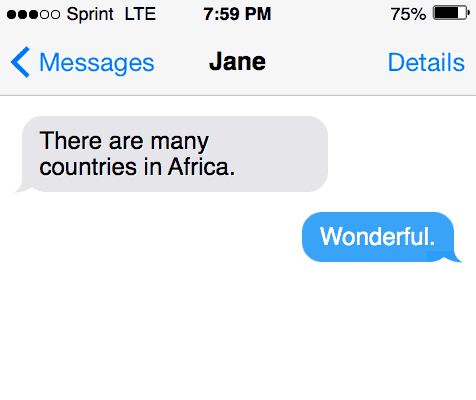Learn when and where to use the linking verbs is or are in a sentence. And master English prose. Learning proper grammar rules takes time, but it will be worth it in the long run. That’s to say, invest the time and learn proper grammar.
When to use “is” or “are?”
When is it correct to use is or are? English grammar can be genuinely perplexing at times; even people that have been speaking the language their entire lives struggle with the question of when to use is vs. are.

The answer can be confusing, but like most things, it just takes some time to learn the difference. So, what is the difference? When is it correct to use is, and when should it be are? Keep reading to find out the correct usage of both.
What is a subject verb agreement?
The answer is three words, and it’s called subject verb agreement.
What is subject verb agreement? Don’t get intimidated by the terminology. The correct use of is vs are is more intuitive than it might seem. The answer is given in the phrase itself: the subject and verb of a sentence must agree with each other.
But what does it mean for these parts of speech to agree with each other? How can parts of speech agree or disagree with one another?
The simplest explanation is that they have to agree with each other in quantity or number. That means they should either be singular or plural, not both. To determine whether to put is or are, focus on the subject, and whether it’s singular or plural.

Quick Tip!
Two subjects = are; one subject = is.
When more than one noun or subject are being used, the correct choice is “are.” In contrast, sentences written in singular use “is.” Here’s a quick look:
✔️ Correct: There are ten apples in the basket.
❌ Incorrect: There is ten apples in the basket.
Ten apples refer to numerous apples (obviously,) or plural apples, so it takes on ‘are,’ as are is the appropriate verb to refer to multiples. Take away the number specifying the exact amount of apples (in this case, it’s ten,) and the correct verb remains ‘are,’ even still. This is because ‘apples’ is the plural form of apple or a single apple.
Hopefully, this helps to better understand subject verb agreement!
In Review
- Rule #1. singular = is
- Rule #2. plural = are
- Rule #3. First-person singular + third person singular = use is.
- Rule #4. First-person plural present, second-person singular, and third-person plural = are.
All about pronouns
The difference between first, second, and third person concerns its point of view or the perspective that the pronouns assume the perspective of.
- First-person singular pronouns includes: I, me, my, and mine.
- Third person singular pronouns includes: He, she, it, him, her, his, hers, and it’s.
- Second person singular pronouns includes: You, your, and yours.
- Third person plural: They, them, their, and theirs.
The first (I, me, my, and mine) speaks to personal thoughts, experiences, feelings and/or opinions. The perspective or POV here is in the first place because the information comes directly from the source itself.
In the second person (you, yours, yourself, and yourselves), the perspective taken on is that of the person or people being addressed, i.e., you. A famous John F. Kennedy quote is spoken in the second person and addresses ‘you,’ (the ‘you,’ here addresses the American people.)
“My fellow Americans, ask not what your country can do for you, ask what you can do for your country.” —John F. Kennedy
Even though the second-person perspective is not necessarily singular, it uses the plural form of the verb to be, “are.”
Here’s a closer look:
- “Are you hungry?”
- “Are you pumped to learn about second-person pronouns?”
- “Are you ready to head out for dinner?”
Each of the above could refer to a single person; however, the correct terminology is are, and this is just one of those peculiar things about English grammar (or so we assume.)
All about definite and indefinite pronouns
A subcategory of the broader grammatical pronouns are the indefinite and definite pronouns. The name given to these types of pronouns should help illuminate its meaning.
Look at it this way: Definite pronouns define; whereas indefinite pronouns are general and non-specific, as they do not refer to any one person or entity.
Singular indefinite pronouns include: Anybody, anyone, and anything.
Plural indefinite pronouns include: Both, few, many, and several.
Singular indefinite pronouns use is; plural indefinite pronouns use are.
Learn what a collective noun is here.
Example sentences correctly using is and are
These sentences show both the correct and incorrect usages of is and are.
✔️ Correct: There are many countries in Africa.
❌ Incorrect: There is many countries in Africa.
✔️ Correct: Sarah is my best friend.
❌ Incorrect: Sarah are my best friend.
✔️ Correct: Are we having pizza for dinner?
❌ Incorrect: Is we having pizza for dinner?
Looking at the examples above, it’s much more apparent how this function (subject verb agreement,) of grammar operates. To get into the nitty-gritty details, the following section deconstructs these sentences into their individual parts of speech.
Correct: There are many countries in Africa.
Which parts of speech are contained in the above sentence? By deconstructing its parts, there are two nouns: countries and Africa; the verb ‘are’; and the preposition, in.
Countries is the plural of country, and refers to more than one country; i.e., countries. This, by itself, informs the writer of which linking verb is needed. Since the noun is plural, ‘are,’ is required.
Try it again using this sentence: Sarah is my friend.
‘Sarah’ is a proper noun, and ‘my‘ is a first-person possessive pronoun. Possessive pronouns expresses belonging or possession of some kind in reference to the noun or subject sentence. Since the pronoun is in the first person singular, and the proper noun refers to a single person and definite noun (i.e., Sarah,) the verb that should be included is ‘is‘.
What are “is” and “are” in grammar?
Remember that is and are conjugations of ‘to be.’ In general, verbs describe actions that occur within clauses and its subject. To be, which is a form of ‘being,’ is the most nondescript verb that exists. ‘To be’ describes being as is. To be is to exist, which is, in itself, a kind of action.
That makes ‘is’ and ‘are’ extremely similar words in their meaning, origin and usage. The difference, therefore, has to do with its conjugations and varied use cases.
Conversely, where there are plural subjects (or more than one subject,) or plural definite pronouns, us are.

Noncountable nouns
In English grammar, there are cases where things can get tricky, and it’s not as clear which linking verb is the right one in the relevant context. English grammar has these things called noncountable nouns, also known as non-count nouns, mass nouns, or uncountable nouns. Noncount nouns are nouns we simply do not count. As such, and by default, they are treated as singular (despite not necessarily being singular.)
Examples of noncountable nouns include sand, rice, water, blood, and so on.
The word ‘sand’ typically refers to over 5 billion, billion (sextillion), granules of sand on any given beach. Though when we use the word sand in a sentence, it’s treated as a singular noun. For example:
Is the sand too hot to walk on?
The sand on the beach is absolutely beautiful.
There is sand in my shoe.
Other noncount nouns include activities like swimming, studying, running, hiking, skating, and so forth.
Collective nouns
Collective nouns refer to entire groups or entities, like government institutions or groups of people. Collective nouns take on the singular form ‘is,’ despite referring to multiples or groups. Consider the following:
My family is coming to visit over the winter.
Our government is corrupt.
My favourite band is playing tonight!
Lesson in review:
- Singular nouns takes the form is.
- Plural nouns take the form are.
Glossary
Linking verb: ‘Being,’ and its conjugations are linking verbs that represents the action of existing.
SVA (subject verb agreement): subject and verb must agree in count/quantity.
First person singular: I, me, my and mine are all first person singular subjects.
Second person singular: You, yours, yourself and yourselves.
Third person singular: He, she, it are all third person singular, spoken in the third person.
Indefinite and definite pronouns: definite pronouns refer to specific proper nouns; whereas indefinite are vague in their reference.
Sources
- Definition of Linking verb: grammarly.com/blog/linking-verbs/
- Definition of Subject verb agreement: grammarly.com/blog/grammar-basics-what-is-subject-verb-agreement/
- Definition of first person singular: wiktionary.org/wiki/first-person_singular
- Definition of Indefinite and definite pronouns: owl.excelsior.edu/grammar-essentials
- Definition of second singular: yourdictionary.com/examples-of-writing-in-second-person
Inside this article
Fact checked:
Content is rigorously reviewed by a team of qualified and experienced fact checkers. Fact checkers review articles for factual accuracy, relevance, and timeliness. Learn more.
Core lessons
Glossary
- Abstract Noun
- Accusative Case
- Anecdote
- Antonym
- Active Sentence
- Adverb
- Adjective
- Allegory
- Alliteration
- Adjective Clause
- Adjective Phrase
- Ampersand
- Anastrophe
- Adverbial Clause
- Appositive Phrase
- Clause
- Compound Adjective
- Complex Sentence
- Compound Words
- Compound Predicate
- Common Noun
- Comparative Adjective
- Comparative and Superlative
- Compound Noun
- Compound Subject
- Compound Sentence
- Copular Verb
- Collective Noun
- Colloquialism
- Conciseness
- Consonance
- Conditional
- Concrete Noun
- Conjunction
- Conjugation
- Conditional Sentence
- Comma Splice
- Correlative Conjunction
- Coordinating Conjunction
- Coordinate Adjective
- Cumulative Adjective
- Dative Case
- Determiner
- Declarative Sentence
- Declarative Statement
- Direct Object Pronoun
- Direct Object
- Diction
- Diphthong
- Dangling Modifier
- Demonstrative Pronoun
- Demonstrative Adjective
- Direct Characterization
- Definite Article
- Doublespeak
- False Dilemma Fallacy
- Future Perfect Progressive
- Future Simple
- Future Perfect Continuous
- Future Perfect
- First Conditional
- Irregular Adjective
- Irregular Verb
- Imperative Sentence
- Indefinite Article
- Intransitive Verb
- Introductory Phrase
- Indefinite Pronoun
- Indirect Characterization
- Interrogative Sentence
- Intensive Pronoun
- Inanimate Object
- Indefinite Tense
- Infinitive Phrase
- Interjection
- Intensifier
- Infinitive
- Indicative Mood
- Participle
- Parallelism
- Prepositional Phrase
- Past Simple Tense
- Past Continuous Tense
- Past Perfect Tense
- Past Progressive Tense
- Present Simple Tense
- Present Perfect Tense
- Personal Pronoun
- Personification
- Persuasive Writing
- Parallel Structure
- Phrasal Verb
- Predicate Adjective
- Predicate Nominative
- Phonetic Language
- Plural Noun
- Punctuation
- Punctuation Marks
- Preposition
- Preposition of Place
- Parts of Speech
- Possessive Adjective
- Possessive Determiner
- Possessive Case
- Possessive Noun
- Proper Adjective
- Proper Noun
- Present Participle
- Prefix
- Predicate



